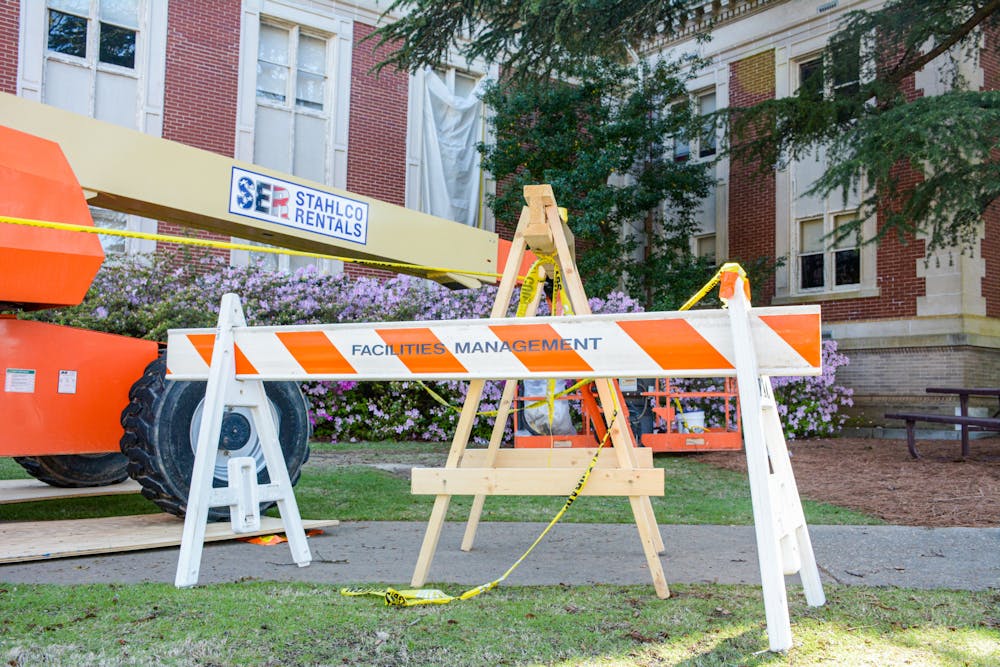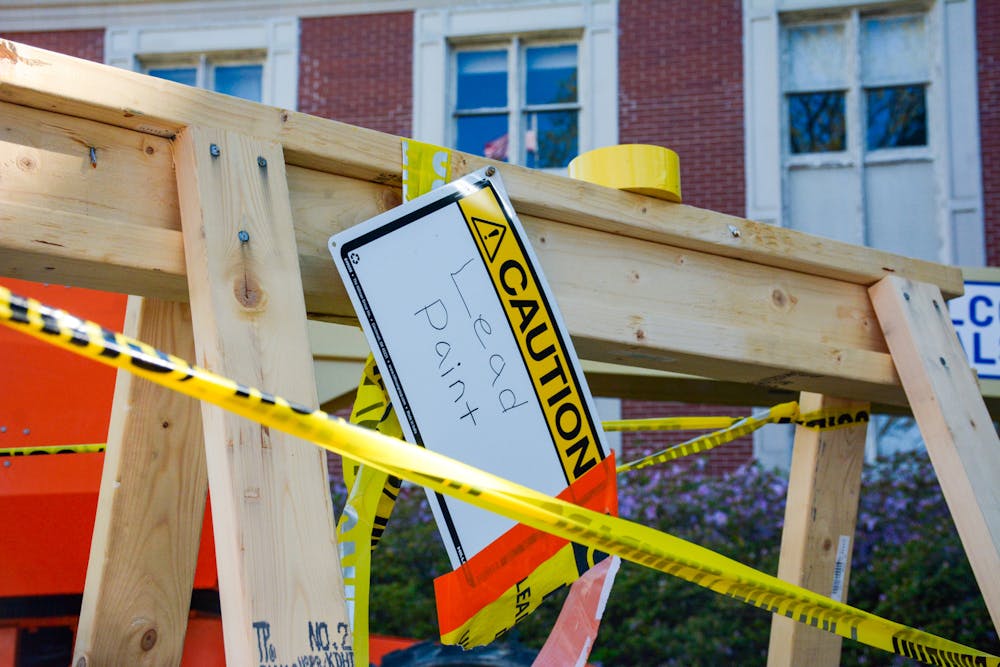Auburn University is removing lead paint from the windows of Mary E. Martin Hall and plans to be finished by April 26.
Built in 1908, Mary Martin Hall has four floors and is about 37,000 square feet. Originally called Carnegie Library, Mary Martin Hall served as the first library on campus. The building now houses Student Financial Services, Career Center and Admissions Processing. Mary Martin Hall got its name from Mary Eugenia Martin who served as Auburn's librarian from 1918 to 1949.
Nathaniel C. Curtis, the building's architect, designed Mary Martin Hall, and it opened in 1910. It was one of the first buildings on campus to be lit with electricity and heated by steam. In 1940, the university's Board of Trustees directed funds to enlarge the library, built with a capacity of 3,850 students. By the early 1960s, they renovated and began building the library dedicated to Martin, which was funded by Andrew Carnegie.
Elizabeth De Kruif and Eric Moore of Risk Management and Safety and Facilities Management aided in explaining Mary Martin Hall's lead paint removal.
Lead paint is a common term used to describe paint with a lead additive. Manufacturers used lead paint to accelerate drying, increase durability, maintain a fresh appearance and resist moisture.
"While in 1978, the federal government banned consumer uses of lead-based paint, it is not a hazard when undisturbed," said De Kruif, the university industrial hygienist in charge of the lead paint testing.

Likely, the lead paint did not affect students or faculty in Mary Martin Hall or older buildings. However, according to the Center for Disease Control and Prevention, children are more likely to be at risk when exposed to lead paint. Today, lead paint can still be found in buildings built before the 1978 Lead-Based Paint Disclosure Rule.
"Federal law does not require removal of lead paint. Federal law only banned the continued use of lead-based paints," De Kruif said.
De Kruif explained that paint chips or wipe samples were sent to a third-party lab that analyzed the samples to determine if lead was present in the paint.
The removal process involved third-party contractors that are Lead-Safe Certified by the Environmental Protection Agency.
"The EPA protects people and the environment from health risks and develops and enforces regulation within the environment," De Kruif said.
After containing the work area, EPA workers removed the paint using a renovation method that does not generate large amounts of dust. They also conducted daily cleanups with EPA-recommended cleaning methods and disposed of paint chips in a way that would not release dust and debris.
According to Moore, director of maintenance for facilities management, the cost of such a process depends on several factors. The amount of removal, the type of surface lead paint is being removed from and the area of the building where work is being completed are all factors taken into consideration.
For long-term building and restoration plans, Risk Management and Safety and Facilities Management regularly stay up-to-date with protocols and handle possible issues as they arise.
"Auburn Facilities Management continues to review the current condition of all buildings and make plans accordingly for repair and renovation of spaces," Moore said.
Do you like this story? The Plainsman doesn't accept money from tuition or student fees, and we don't charge a subscription fee. But you can donate to support The Plainsman.





